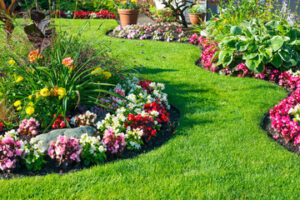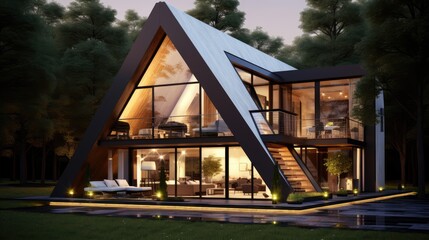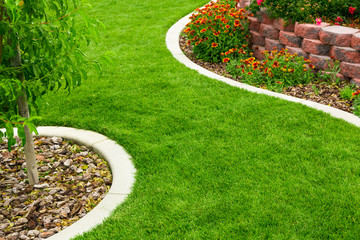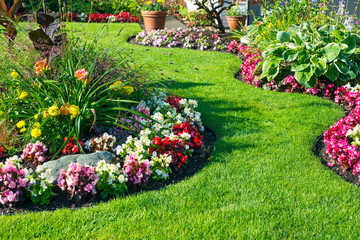Landscape Photography 101
Landscape photography requires a combination of artistic and technical thinking. Technical thinking happens in the logical hemisphere of your brain, while creative thinking happens in the right hemisphere.
Landscape refers to all of the visible features of an area of land, especially a rural one. It includes landforms like mountains, hills, and rivers and living elements such as vegetation. Visit Lighting Orlando for more information.

The physical features of a land region and how those elements blend in natural or artificial environments are known as a landscape. It can be seen from various vantage points and consists of the natural elements of landforms (hills, rivers, streams, ponds, lakes, and seas) and living elements of plant life; human-made aspects such as buildings and structures and cultivated or wild crops; and transitory factors like lighting and weather conditions.
The word landscape can be used in art and design, as well as to describe a view or area of nature. Landscape painting involves using paint, charcoal, or ink to create a two-dimensional representation of a three-dimensional scene. The artist uses the beholder’s body to set the parameters of scope, depth, and details seen within a vista. In other words, the landscape is a medium through which the artist conveys an image of the world around him to his audience.
A view or picture depicting a broad expanse of scenery is described as a landscape. This can include mountains, valleys, deserts, forests, and other types of terrain. Landscape can also refer to a person’s mental state. “Landscapes occupied the whole landscape of my thoughts” (James Thurber).
Landscape can also refer to the way a photo is oriented. When a photograph is tilted with the camera, the image is described as a landscape. When the camera is pointed vertically, the image is called a portrait.
People can alter a natural landscape by planting, cultivating, and tending to flowers, trees, shrubs, and lawns. A cultivated landscape is also known as a garden or estate. It can be contrasted with a wilderness landscape, a natural environment unaltered by humans.
A wild landscape can include a taiga, tundra, or Earth’s polar regions. It is the natural setting where animals live and find food, shelter, and mates. It can also be a forest or jungle, a marsh or swamp, and a wetland or coastal zone. In addition to enhancing the beauty of a land, using landscape can also reduce erosion, control stormwater runoff, promote surface infiltration, and minimize the need for fertilizers and pesticides, which contribute to pollution.
The word landscape has several meanings: as a noun, it refers to a picture, sketch, etching, or map of inland scenery; it is also the branch of painting, photography, and architecture that deals with such images. As a verb, it means shaping a tract of land to make it more attractive or useful. The term has many connotations and implies beauty, mystery, or tranquility. It is often used with other art forms, such as still life and portraiture, to give them a sense of depth and space.
The landscape has an etymological history dating back to the 16th century, with origins in Old English (landscape), Middle Dutch (landed), and German (Landschaft). At this time, a new technique was developed for painting outdoor scenery, known as “en plein air” painting. This involved painting in the open air to capture the natural light of the moment and the varying hues of the changing day. This enabled artists such as Turner and Constable to create vivid scenes of nature.
In the 17th century, the classical landscape emerged, with scenes from myth and biblical stories set in idyllic ancient Greek or Roman settings. The leading landscape painters of this period were Nicolas Poussin and Claude Lorrain. During the 18th century, several new trends were developed in landscape painting, such as the romantic notion of remote and wild landscapes and a growing interest in using nature to convey religious or philosophical messages or mystical ideas.
Today, the landscape concept encompasses the physical aspects of landforms and their evolution, together with the cultural overlay of people’s perceptions of the environment and associations resulting from these. It is the basis for integrated landscape management, a growing field of practice at local and international levels that seeks to manage land use, habitat conservation, and environmental restoration. It also incorporates the scientific disciplines of landscape ecology, palaeogeographic reconstruction, and climatic geomorphology. In addition, the concept embraces a wider societal perspective, which includes anthropocentric and relativistic viewpoints of the world.
Generally speaking, landscape refers to the visible features of an area of land. It includes the physical elements of geophysically defined landforms like mountains, hills, rivers, lakes, and the sea; living aspects of land cover, including indigenous plants; and transitory lighting and weather conditions. It also incorporates the cultural overlay of human presence, often created over millennia.
The landscape is a rich source of information about the environment and the interactions of natural and human processes. It provides valuable clues to understanding the Earth and predicting future environmental problems. It can help us appreciate how complex the planet is and what a challenge it is to maintain its delicate balance of natural ecosystems. It can also help us create a sense of place, where we can learn to value the natural and built environment.
It is also a rich source of artistic inspiration. It has been a major theme in both ancient Roman and modern European art, with many famous artists of the Renaissance and the Baroque period choosing to focus on landscape painting. The Romantic movement intensified interest in landscape, with painters such as Caspar David Friedrich depicting wild and remote scenes. The French Barbizon school of landscape painters, led by Jean-Baptiste-Camille Corot, took the genre to a new level.
Landscapes inspire many other forms of art and expression, from the sandcastles and pinwheels children build on a beach to the Dutch windmills that dot the countryside. A landscape can be a painting, a countryside view, or even a city skyline.
The word landscape has several other meanings, including a picture or depiction of a section of natural, inland scenery and changing the appearance of a plot of ground to make it more attractive, such as by planting trees or shrubs. It is also a term used in digital technology to describe the horizontal orientation of a page or screen, as in a PowerPoint presentation.
The profession of landscape architecture is concerned with planning and altering the natural landscape to achieve aesthetic and functional objectives. This can include the creation of public parks and gardens, such as Central Park, designed by Frederick Law Olmstead, or modifying existing residential or commercial sites. State boards license landscape architects to practice their profession. The American Society of Landscape Architects (ASLA) is the national professional association for landscape architects.
Landscape is a broad term that refers to all natural and manufactured features visible on a piece of land. It includes geographically defined physical elements like hills, mountains, lakes, rivers, the sea, ponds, and living elements to cover the land, such as indigenous vegetation. It also includes artificial constructions like structures and buildings, weather conditions, and lighting.
It is important to understand the types of landscapes before designing your own. Understanding these basic building blocks allows you to create a landscape unique to your design preferences and tastes. This way, you can clearly and efficiently communicate with your design team about style.
Different landscape styles include traditional landscaping, tropical, and desert gardening. Trimmed lawns, hedges, and geometric designs characterize traditional landscaping. It is a common style for homes in warm climates, and it can include features such as a pond, patio, or fire pit. This type of landscaping is popular among homeowners because it can add to a home’s curb appeal and increase its value.
Another type of landscape is the cultural landscape, created and designed intentionally by humans. The Orkhon Valley Cultural Landscape is a great example of this type of landscape. This landscape incorporates the local people’s spiritual, economic, and cultural aspects into its physical characteristics. It is also a popular tourist destination for many people.
One of the most important aspects of the landscape is environmental sustainability. Sustainable landscapes can help reduce air pollution, increase energy efficiency, and restore habitats. In addition, they can improve the mental health of citizens by reducing stress, blood pressure, heart rate, and muscle tension.
In urban areas, landscape can also alleviate problems caused by the urban heat island effect. For example, plants can act as a coolant, decreasing temperatures and reducing water use. In addition, they can also decrease noise levels and provide a quiet retreat from busy city life. Landscapes can also be used to promote the green movement and encourage people to live more environmentally friendly lives.





